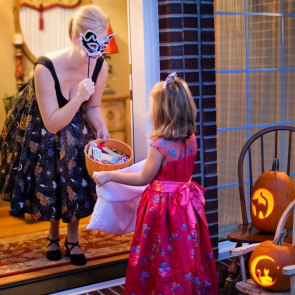The History of Halloween
by Lewis Saunderson
• Published 25/10/2021
The time of year when the days get shorter, colder and you start thinking Christmas is only around the corner! But we’re not here to talk about Santa Claus just yet, we’re here to enlighten you on the second biggest holiday in America, and that is Halloween!
Trick-or-treating, fancy dress and apple bobbing are a few of the few traditions for the day that falls on 31st October. But, have you ever thought about why we do these traditions? And where did they originate from?
Halloween stemmed from the Celts – their people’s culture which was spread across Europe around 2000 years ago. 31st October was the day they celebrated the end of the Harvest season with a festival called Samhain. This night also marked the Celtic New Year and was considered a time ‘between years’. A magical time when the ghosts of the dead walked the Earth. People would say that time would be the thinnest between life and death.
On Samhain, villagers would gather and light huge bonfires to drive the dead back to the spirit world and keep them away from the living. However, as the Catholic Church’s influence grew in Europe it frowned on the pagan rituals such as Samhain. In the 7th Century, which is the period years 601 – 700, the Vatican began to merge Samhain with a church sanctioned holiday so on 1st November was designated ‘All Saints Day’ to honour martyrs and the deceased faithful. Both of these holidays are related to the afterlife and about survival after death. Some say it was a calculated move on the part of the church to bring more people into the fold.
All Saints Day was known as Hallowmas – hallow means holy or saintly. So the translation roughly is ‘mass of the saints’. The night before Hallowmas was called All Hallows Eve which gradually morphed into Halloween. The holiday started in America with the wave of Irish immigrants during the potato famine of the 1840s. They brought several of their holiday customs with them including bobbing for apples and playing tricks on neighbours.

Trick-or-treating has been a part of Halloween tradition for over 80 years!
A popular trick would be to remove gates from the front of people’s houses. The young pranksters wore masks so they wouldn’t be recognised. However, over the years the tradition of ‘harmless’ tricks grew into vandalism which peaked in the 1930s and hooliganism was rife on the holiday. People would bribe the tricksters with treats so they wouldn’t vandalize their houses and children were encouraged to travel door-to-door for a treat as an alternative to causing trouble. By the late 1930s trick-or-treating was fully a part of Halloween tradition.
Since then Halloween has been massively commercialised and dramatized to the spooky holiday it’s known for today. We hope you enjoyed the history of Halloween. Click the link for more of our blogs
here!


